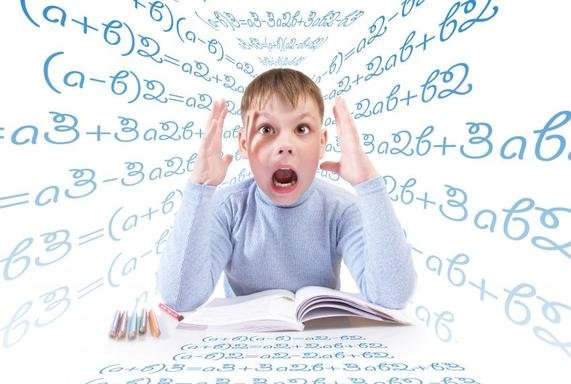Dyscalculia: Struggling with numbers?
What is dyscalculia?
In short dyscalculia is the struggle with any and all math related problems, but here is a more broadly viewed definition by the Dyscalculia organization:
Dyscalculia is defined as a failure to achieve in mathematics commensurate with chronological age, normal intelligence, and adequate instruction. It is marked by difficulties with: visualization; visual-spatial perception, processing and discrimination; counting; pattern recognition; sequential memory; working-memory for numbers; retrieval of learned facts and procedures; directional confusion; quantitative processing speed; kinesthetic sequences; and perception of time.
Source
Does your thoughts feel like this when you have to do maths>

Image Source
Symptoms of Dyscalculia
- Struggles understanding the concepts of place value, quantity, number lines, positive and negative value as well as carrying and borrowing.
- Struggles understanding and doing word problems as well as sequencing information or events.
- Shows difficulty in using steps that is involved in math operations as well as understanding of fractions.
- Challenged with making change as well as using and handling money.
- Displays a difficulty in recognizing patters when they are adding, subtracting, multiplying and/or dividing.
- They also struggles understaning any concepts that are related to time.
At the following website you can complete a questionaire (dyscalculia checklist):
http://www.dyscalculia.org/diagnosis-legal-matters/math-ld-symptoms
Teachers and/or parents can complete this checklist.
Different types of Dyscalculia
How can these learners be assissted?
- Allow the children to use their fingers as well as any extra scratch paper.
- Use diagrams when doing math and draw the math concepts.
- Provide the learner with a peer group member to assit them.
- Make use of different colored pencils so that they can differentiate between the math problems.
- When doing word problems allow the children to draw pictures.
- Use alternative methods like rhythm and music to teach the children math facts.
- Provide the children with scheduled computer time for the student to drill and practice math concepts.
Here is a summary about dyscalculia.
Mindmap about Dyscalculia
Resources
https://ldaamerica.org/types-of-learning-disabilities/dyscalculia/
http://www.dyscalculia.org/diagnosis-legal-matters/math-ld-symptoms

Team South Africa banner designed by @bearone






@royrodgers has voted on behalf of @minnowpond. If you would like to recieve upvotes from minnowponds team on all your posts, simply FOLLOW @minnowpond.
Hello, good afternoon from Venezuela and good profit, I really liked this topic, I really had no idea of its definition, but if it usually happens that this was discalculated in many and not provided adequate attention to help the student and yet rejection without reason.
I like this technique that you put in your publication: 4. Use different colored pencils so that they can differentiate between mathematical problems.
Greetings and I hope to continue reading your topics.
Thank you!
I see more and more students presenting with maths difficulties who often believe they are dyscalculic. It seems beyond question that the teaching could ever have been at fault through non specialists teaching the subject.
Thank you! wish more people could share this view. There are children who truly have dyscalculia but most of them where failed by those teaching them mathematics.